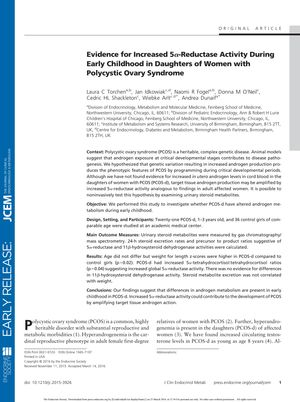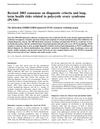Evidence for Increased 5α-Reductase Activity During Early Childhood in Daughters of Women With Polycystic Ovary Syndrome
March 2016
in “
The Journal of Clinical Endocrinology & Metabolism
”

TLDR Young girls whose mothers have PCOS may have higher activity of a specific enzyme that could lead to developing PCOS later.
The study from May 1, 2016, examined 21 daughters of women with Polycystic Ovary Syndrome (PCOS-d) and 36 control girls, all aged 1-3 years, to determine if there was evidence of increased 5α-reductase activity, which could predispose them to developing PCOS. The researchers measured urinary steroid metabolites and found that the PCOS-d group had significantly higher 5α-tetrahydrocortisol:tetrahydrocortisol ratios, indicating increased global 5α-reductase activity, but no differences in 11β-hydroxysteroid dehydrogenase activity. The study concluded that increased 5α-reductase activity is present in early childhood in daughters of women with PCOS, which may contribute to the future development of the condition.


